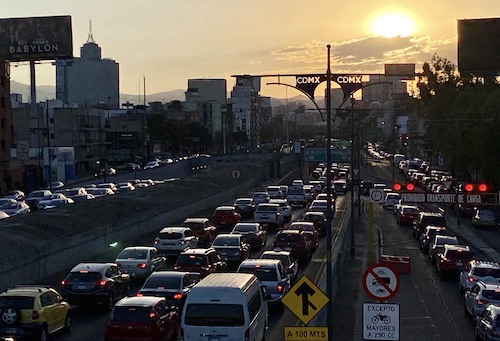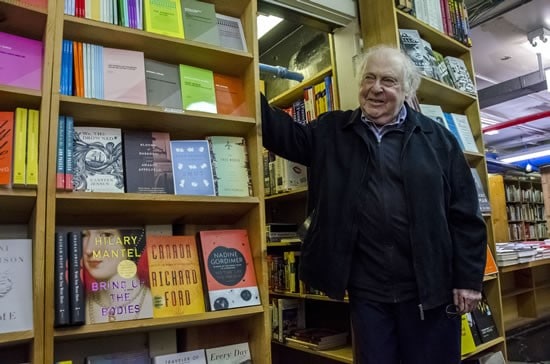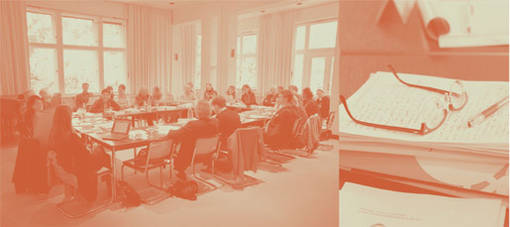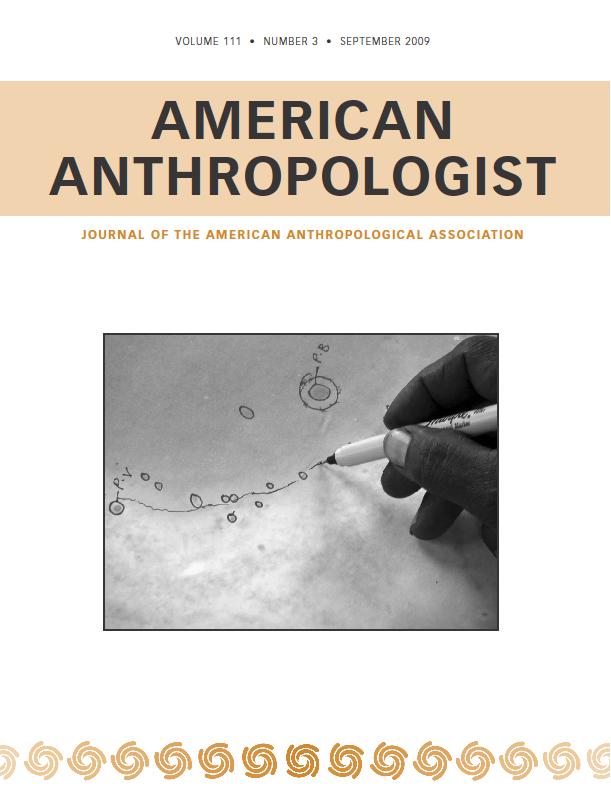Anyone who spends time in Mexico City will spend much of it in traffic. One of the most clogged cities in the world, residents will lose on average 158 hours per year to congestion on the road (Ortego et al 2021). In recent years, the city government has sought to limit the number of cars that take to the streets each day, but these efforts have largely targeted poorer people who travel from their homes in the city’s outskirts to their workplaces in the centre, rather than those who live and drive short distances in wealthy, congested regions (Guerra and Reyes 2022). So, gridlock continues apace.
Sound File 1: The streets of La Merced, in central Mexico City.
Audio Player
There’s a frantic sluggishness to Mexico City’s traffic; like a hydraulic system under immense pressure, space fills to the extent that it opens. In his book, Horizontal Vertigo–named for the feeling of living in a city whose seismicity demands more lateral expansion than vertical–Mexican writer Juan Villoro (2015:54) suggests that,
“[t]oo many days spent in traffic jams makes us idolise speed. To compensate for the incessant loss of direct connections, we believe in alternate routes… in search of a path of circumnavigation, drivers abandon their chosen path and believe a twisting side road will make things better, if only because they keep moving forward.”
Anonymous in the inexorable crowd, Mexican anthropologist Claudio Lomnitz (2001:60) that the city’s roads supplant the courtesy more typical in Mexican life for a single rule: “don’t give away an inch”. For this reason, he says, “[d]rivers in Mexico City tend to drive with their eyes pointed straight ahead and cast slightly downward”, because if they were to inadvertently make eye contact with another driver, politeness would demand that they manifest them a gap in the logjam.
As drivers jostle for limited space, hands at 10 and 2 and eyes firmly at 12, commuters develop an expanded sensory repertoire to keep moving. Often this involves car horns, which we might understand as a non-verbal form of communication. In Australia, my home country, our lexicon is limited: a horn will either mean “Get fucked, fuckwit!” (cf. Gawne 2016) or “Hey, mate!” But honks have different meanings everywhere (Mahmood 2021). Julia Simon (2012), writing of Cairo, suggests that “[h]onking is a language”, and different horns convey different meanings–everything from “You should learn to drive” to “I love you”.
Mexico City’s streets have a peculiarly large number of endemic sounds (Alba Vega and Rodríguez 2022). When I bring up street sounds with my friends, we invariably begin listing all we can, often reaching 15 or 20 unique sounds that can be heard on Mexico City’s streets on any given day. We can add to this the symphony of expressive honks that echo along the city’s brimming streets. With the thickening traffic, the sound of the street increases exponentially, each new car adding to the din while demanding auditory escalation from other motorists. Although the traffic might be stationary, its sound will still travel, overflowing the streets to amble through parks, markets, and the most buffered corners of the city’s apartments. Even if you’re not on Mexico City’s streets, you never really leave them.
Riding my bike through its traffic over the last five years, I’ve learned by force Mexico City’s wide vocabulary of horns. Being able to identify that different vehicles use different honks and toots, and knowing that these will vary according to infrastructure, conditions, weather, time of day, and part of the year, is what Steven Feld (1996) calls “acoustemology”: a portmanteau of “acoustic” and “epistemology” that names a sonic way of knowing the world. As sonic practices and expectations accumulate socially and historically, undifferentiated noise becomes differentiated sounds, and Mexico City’s streets transform from cacophony to systematic commotion. So, in the interest of systematic knowledge (and public safety), this essay tabulates the streets’ honks into a taxonomy of cláxones [horns], a “claxonomy” of Mexico City’s traffic.
Taxonomies are a peculiar form of knowledge production. Lorraine Daston (2004) shows in her history of botany that taxonomies often use holotypes, which combine the range of peculiarities a species might exhibit into an ideal specimen that has never existed. Concrete abstractions, this attention to minute detail is not only a catalogue of diversity but, as Foucault pointed out long ago, a mode of adjudicating difference that generates an overarching sense of order. By assuming the world to be rational, the taxonomic mind is deeply functionalist–famously, the Russian chemist Dmitry Mendeleev left gaps in his 1869 Periodic Table of Elements for the yet-unknown elements a coherent world would require (Neale, Phan, and Addison 2019).
In their pursuit of the world’s universal order, taxonomists seek a universal language that avoids the problem of synonymy–multiple names for the same thing–while their critics point to the hubris of believing that the world’s multitudes could be, in G.K. Chesterton’s (1904) words, represented by a “system of grunts and squeals”. The categories that taxonomies use might well be arbitrary, a point Jorge Luis Borges (1952) makes when discussing a taxonomy that divides the world’s animals into 14 categories:
- those that belong to the Emperor
- embalmed animals
- trained animals
- suckling pigs
- mermaids
- fabulous animals
- stray dogs
- those animals included in the present classification
- animals that tremble as if they were mad
- innumerable animals
- animals drawn with a very fine camelhair brush
- etcetera
- animals that have just broken a flower vase
- animals that from a long way off look like flies
It is for these reasons–but most acutely, the rapid collapse of global biodiversity–that the discipline of taxonomy is in crisis (Meier 2008). Fortunately for the current project, neither the traffic nor the horns of Mexico City’s streets are disappearing quite so quickly–though Mexico City’s Ministry of the Environment did promulgate legislation in 2022 to limit the excessive use of horns (SEDEMA 2022).
In the spirit of classical taxonomy, this essay arbitrarily selects a series of common honks to assert an overarching system of meaning shared by people on Mexico City’s streets. While it might sound cacophonous, that residents can distinguish the meaning of each horn shows we’re far from Babel; motorists’ improvisations are a vocabulary emergent from the demands made by a megacity that is, in Dean Chahim’s (2022) memorable phrasing, “governed beyond capacity”. As residents loudly fill the void left by the state with new apparatuses of meaning and management, convention replaces rule so people can keep moving.
I. Honks of misaligned proportion, namely the Metrobús. As these big red buses of central Mexico City approach their stations, you will hear three sharp toots, and you might be surprised that such a long vehicle has so high-pitched a horn. If you’re riding your bike in the Metrobús lane (which is a great way to avoid the traffic), you will receive one sustained high-pitched honk, a suggestion that your best interest involves removing yourself extremely quickly.
Sound File 2: Metrobús approaching station.
II. Honks of false urgency, namely police cars. Several distinct horns will sound from the city’s arbiters of order, most of which can be safely ignored. Often, you’ll hear a single, sirenless pulse, baanh (and sometimes a double, baanh baanh), which officers of the law use to advise road-users that, for the good of the people, they are going to have to run a red light. This is the same sound that police cars make as they pass a street-side business that pays officers to check on them a few times a day. If, against, the odds, they’re on route to an emergency, they’ll have their siren on and they’ll be making that same pulse, either repeatedly or for sustained intervals. Of all their sounds, this one might warrant attention, though there are few strict rules when it comes to Mexico City’s law enforcement. The city’s ambulances use this same pulsing siren during urgent moments, and given that Mexico City has only 45 government ambulances to serve its nine million residents (Ide 2020), it pays to be sure who is honking.
Sound File 3: Single police pulse.
Audio Player
Sound File 4: Double police pulse.
Audio Player
Sound File 5: Pulse with siren.
Audio Player
III. Honks that make visible the invisible, namely motorbikes. At quieter intersections, cars tend to approach without slowing down, so motorcyclists, worried they might not be seen in time, will let out one to three (1-3) quick toots. As a rule of thumb, the faster the motorcyclist is travelling, the closer together the toots. Depending on which part of the city you are in, this will begin a little before 6am and continue until about 10pm.
Sound File 6: Motorbike approaching intersection.
Audio Player
IV. Honks that turn public space into personal territory, namely cars. There is a wide vocabulary for car horns, which I will organise from least to most irritating:
-
- There is the watchful driver, who will offer a single, very slight honk as they pass a double-parked car whose door might fling open, or at a driver who seems like they might stray from their lane. We might think about that honk as translating to “¡Aguas! [Watch out!]”. It is generally not followed by another honk but it might be extended into a firmer, longer blast if the honking driver feels that the driver of the car in question might be inattentive or unpredictable.
Sound File 7: Patient Watchful Car
Audio PlayerSound File 8: Concerned Watchful Car
Audio Player
- You can distinguish the watchful driver from a frustrated one by the presence of a second honk. If a driver impinges on another, they will receive a one-short, one-long pair, with the length of the long honk relative to the frustration of the driver.
Sound File 9: Frustrated CarAudio Player - This double honker, however, might transform a regular driver into an affronted one, as they will, in response, offer up to four honks (three short, one long) to declare that they have been wrongfully impugned and that it is the double-honker, in fact, who is out of line.
Sound File 10: Wrongfully Impugned CarAudio Player - Like the nervous motorcyclist, an impatient driver who is approaching an intersection without wanting to slow down will lightly tap the horn with their fist or the ball of their palm, making between one and several dull honks, which advises unseen cars that right of way, road rules, and common courtesy will have no bearing upon this intersection for the next three to five seconds, and that everyone else would do well to monitor the speed with which they approach.
Sound File 11: Impatient CarAudio Player - A late driver, who has realised only after a traffic light has turned red that they must immediately relieve themselves of the intersection, will blow multiple medium-length honks back-to-back until they have cleared the area.
Sound File 12: Semáforo CarAudio Player-
- As per IV2, these multiple medium-length honks will often be met by a smattering of frustrated two honkers, from irritated drivers who have been forced to wait longer.
- As per IV3, these two-honkers might in turn be answered by a few four-honkers from people who didn’t hear or see the late-crosser, and have interpreted the two honkers as having wrongfully been directed toward them.
- Also as per IV3, the original two-honker might then become annoyed that the later four-honker has wrongfully interpreted that they were wrongfully interpreted, and will offer them a further corrective four-honker.
- This ongoing saga will distract drivers, causing one of them to realise only after a light has turned red that they must immediately relieve themselves of the intersection, and steps IV5(1)-IV5(4) will repeat for a few cycles.
-
- A peak hour driver, trapped in a choking avenue, might blast one long, extended honk, which other drivers might join, offering street-side apartments a fanfare of futility.
Sound File 13: Trapped CarsAudio Player
- There is the watchful driver, who will offer a single, very slight honk as they pass a double-parked car whose door might fling open, or at a driver who seems like they might stray from their lane. We might think about that honk as translating to “¡Aguas! [Watch out!]”. It is generally not followed by another honk but it might be extended into a firmer, longer blast if the honking driver feels that the driver of the car in question might be inattentive or unpredictable.
V. Honks of the heavens, namely the pastry cyclist. The finest honk that you will hear in all of Mexico City: the angels of baked goods. A morning blessing, squeezed in bursts of three to seven by a cyclist with a large basket of pastries, these endearing, welcomed toots echo through quiet streets between 7am and 10am each day, and a little later on Sundays. If you’re in a car and want a sweet treat, be careful which honk you use to get the cyclist’s attention–I’d recommend a sharp whistle.
Sound File 14: Pastry cyclist
Audio Player
At peak hour, cars on Mexico City’s avenues travel just a little faster than walking pace (Crôtte, Noland, and Graham 2009), while the speed of sound is 340.29m/s (at sea level; because of its altitude, even sound slows down in Mexico City). If we were to categorise the components of Mexico City’s cars according to their capacity for movement, the horn would then have to be its most mobile, its possibility for and range of movement growing in tandem with the stuckedness of the vehicles that honk it. As these sounds weave between congested cars, drowning out and being drowned out by other horns, merging into a single force, travelling out of the city to the mountains that hem it, ricocheting back and radiating out anew, they articulate an overarching feature of the city’s social life, one whose restless audibility defies the stasis of what can be seen.
References
Alba Vega, Carlos, and Mauricio Rodríguez Breu. 2017. ‘El Trabajo en las Calles’. Apuntes 6: 1-8.
Borges, Jorge L. 1952. ‘El Idioma Analítico de John Wilkins’. In Otras Inquisiciones, 60-63. Buenos Aires, Argentina: Grupo Editorial Sur.
Chahim, Dean. 2022. ‘Governing Beyond Capacity: Engineering, Banality, and the Calibration of Disaster in Mexico City’. American Ethnologist 49(1): 20-34.
Chesterton, Gilbert K. 1904. ‘G.F. Watts’. London, UK: Duckworth and Co.
Crôtte, Amado, Robert B. Noland, and Daniel J. Graham. 2009. ‘Estimation of Road Traffic Demand Elasticities for Mexico City, Mexico’. Transportation Research Record 2134(1): 99-105.
Daston, Lorraine. 2004. ‘Type Specimens and Scientific Memory’. Critical Inquiry 31(1): 153-182.
Feld, Steven. 1996. ‘Waterfalls of Song: an Acoustemology of Place Resounding in
Bosavi, Papua New Guinea’. In Senses of Place, edited by Steven Feld and Keith H.
Basso, 91-135. Santa Fe: School of American Research Press.
Gawne, Lauren. 2016. ‘Australian National Dictionary Reports Australia Invented an… Interesting… Curse Word’. Slate, Sept. 23.
Guerra, Erick and Ariadna Reyes. 2022. ‘Examining Behavioural Responses to Mexico City’s Driving Restriction: A Mixed Methods Approach’. Transportation Research Part D: Transport and Environment 104:1-12.
Ide, Wendy. 2020. ‘Midnight Family Review – Superb Documentary on Mexico’s Private Ambulances’. The Guardian, February 22.
Lomnitz, Claudio. 2001. Deep Mexico, Silent Mexico: An Anthropology of Nationalism. Minneapolis, USA: University of Minnesota Press.
Mahmood, Jathla A. ‘What Do Car Horns Say? An Overview of the Non-Verbal Communication of Horn Honking’. Open Journal of Social Science 9(8): 375-388.
Meier, Rudolf. 2008. ‘DNA Sequences in Taxonomy: Opportunities and Challenges’. In The New Taxonomy, edited by Quentin.D. Wheeler, 95-127. Boca Raton, USA: CRC Press.
Neale, Timothy, Thao Phan, and Courtney Addison. 2019. ‘An Anthropogenic Table of Elements: An Introduction’. Theorizing the Contemporary, Fieldsights, June 27.
Ortego, Jesús, Renato Andara, Luis Manuel Navas, Carmen Luisa Vásquez, and Rodrigo Ramírez-Pisco. 2021. ‘Impact of the Covid-19 Pandemic on Traffic Congestion in Latin American Cities: An Updated Five-Month Study’. In Smart Cities: Third Ibero-American Congress ICSC-Cities 2020 San José, Costa Rica, November 9-11, 2020, Revised Selected Papers 3, edited by Sergio Nescmachnow and Luis Hernández Callejo [eds.] (pp.216-232). Springer: Cham, Switzerland.
Secretaría del Medio Ambiente [Sedema]. 2022. ‘Informa Sedema Sobre Reglamento Para Regular la Emisión de Ruido en Fuentes Móviles’. Gobierno de la Ciudad de México, SEDEMA, June 2.
Simon, Julia. 2012. ‘In Cairo, Cars Speak’. The World in Words, September 18.
Villoro, Juan. 2015. El Vértigo Horizontal. Ciudad Oaxaca, México: Almadía Ediciones.






Excellent article. It reminded me very much of Manila, Philippines, with the sole exception of the pastry cyclist.
I am reminded of visiting Zhan Jiang in China during 1992, and finding that the drivers used horns pretty much continuously to advertise their location to all sharing the road.